The History of the Problem's Final Score
(1999 - 2011)
2011 - Yamada Shinji's Tsuke Again
|
(Referenced by
So our terminal result for the outcome of the problem is that Black wins by three points. However, there remains the danger that Black might play tenuki in the later endgame on the left side, and enforce the Semeai Variation with a move at |
|
///:
Now, Black cannot tenuki the endgame on the left, for example, to start the Semeai Variation with |
|
|
|
|
|
|
|
As a matter of course, Black could capture White's |
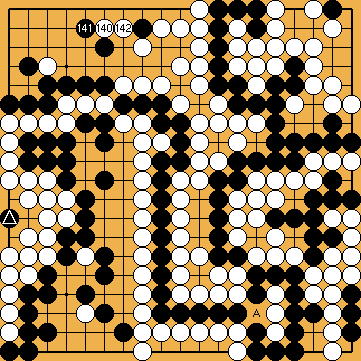
 496
496 :
: ) inside White's four-point-eye on the left, White can immediately play the tsuke of Yamada Shinji, to gain an advantage of one point locally. Black cannot defend at
) inside White's four-point-eye on the left, White can immediately play the tsuke of Yamada Shinji, to gain an advantage of one point locally. Black cannot defend at  , because White would play
, because White would play  , capture Black's stones in sente, and thereafter reach a seki in the top left (
, capture Black's stones in sente, and thereafter reach a seki in the top left ( . This will be profitable for Black, if the difference in the results of both main variations (Semeai and Capture Variation) is greater than, or equal to, his loss in the endgame on the left. This does not apply to our solution; however, it does apply to the professional solution.
. This will be profitable for Black, if the difference in the results of both main variations (Semeai and Capture Variation) is greater than, or equal to, his loss in the endgame on the left. This does not apply to our solution; however, it does apply to the professional solution.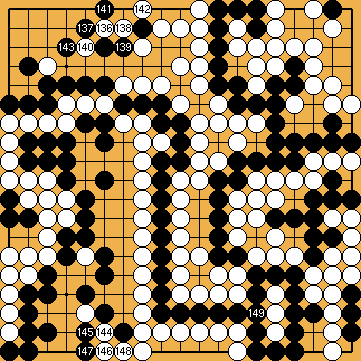
 :
: .
.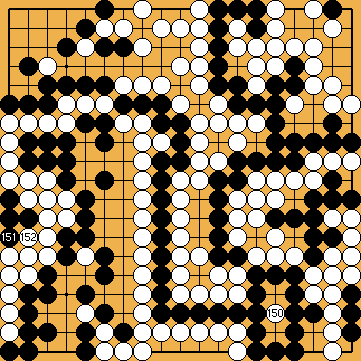
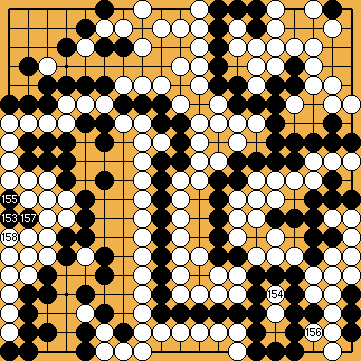
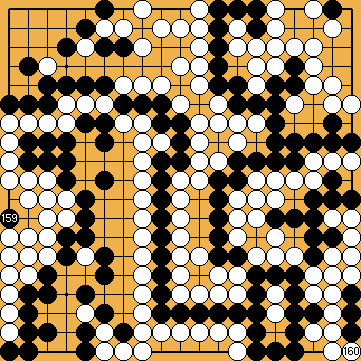
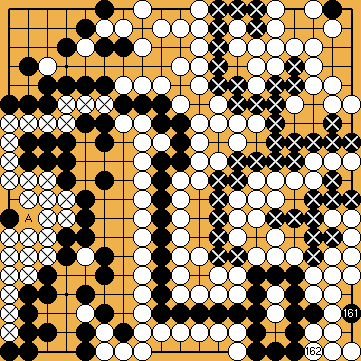
 :
: -group on the left side with a move at
-group on the left side with a move at  in the lower left corner, so capturing all of Black's
in the lower left corner, so capturing all of Black's  -groups on the right, which is larger.
-groups on the right, which is larger.
